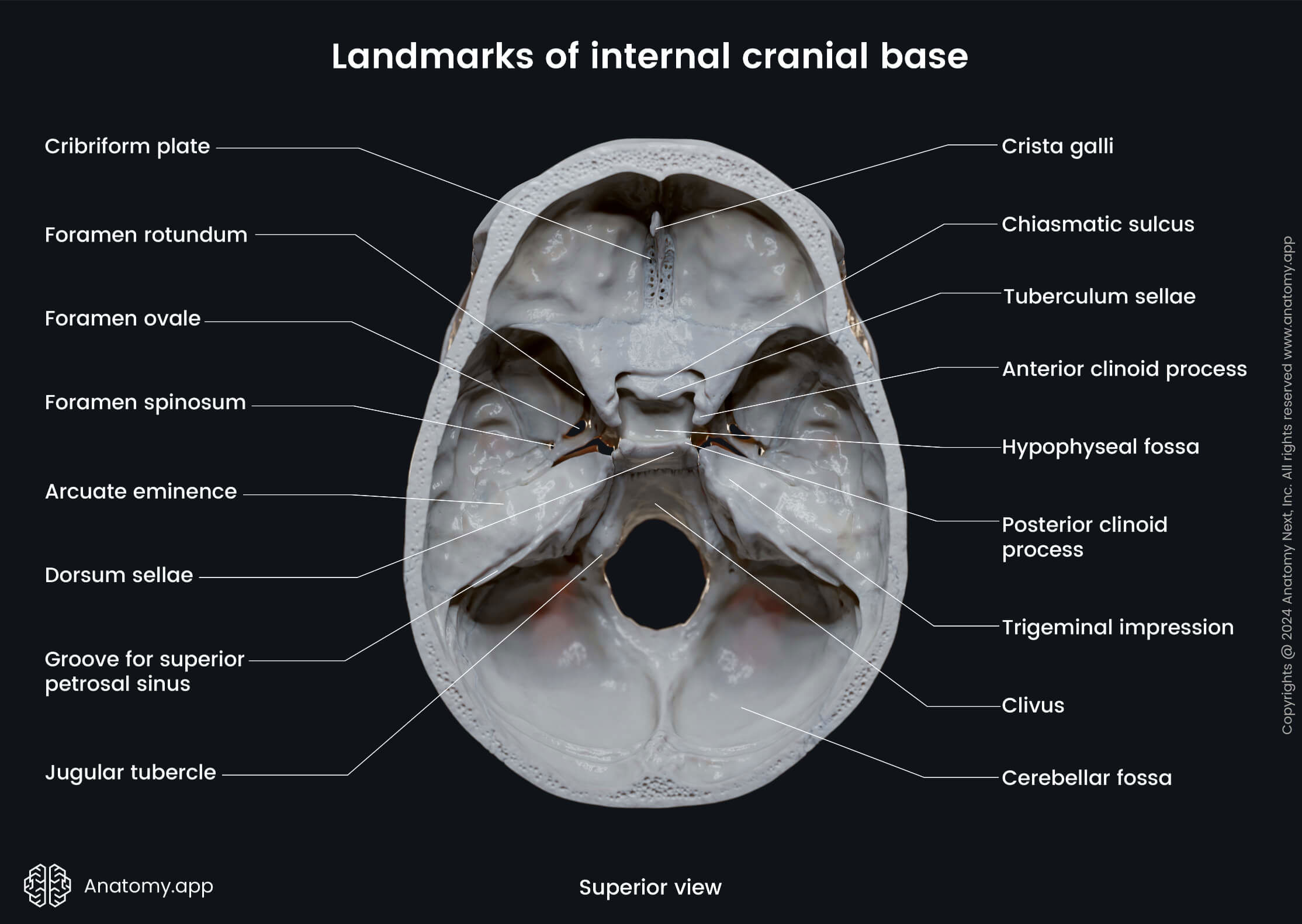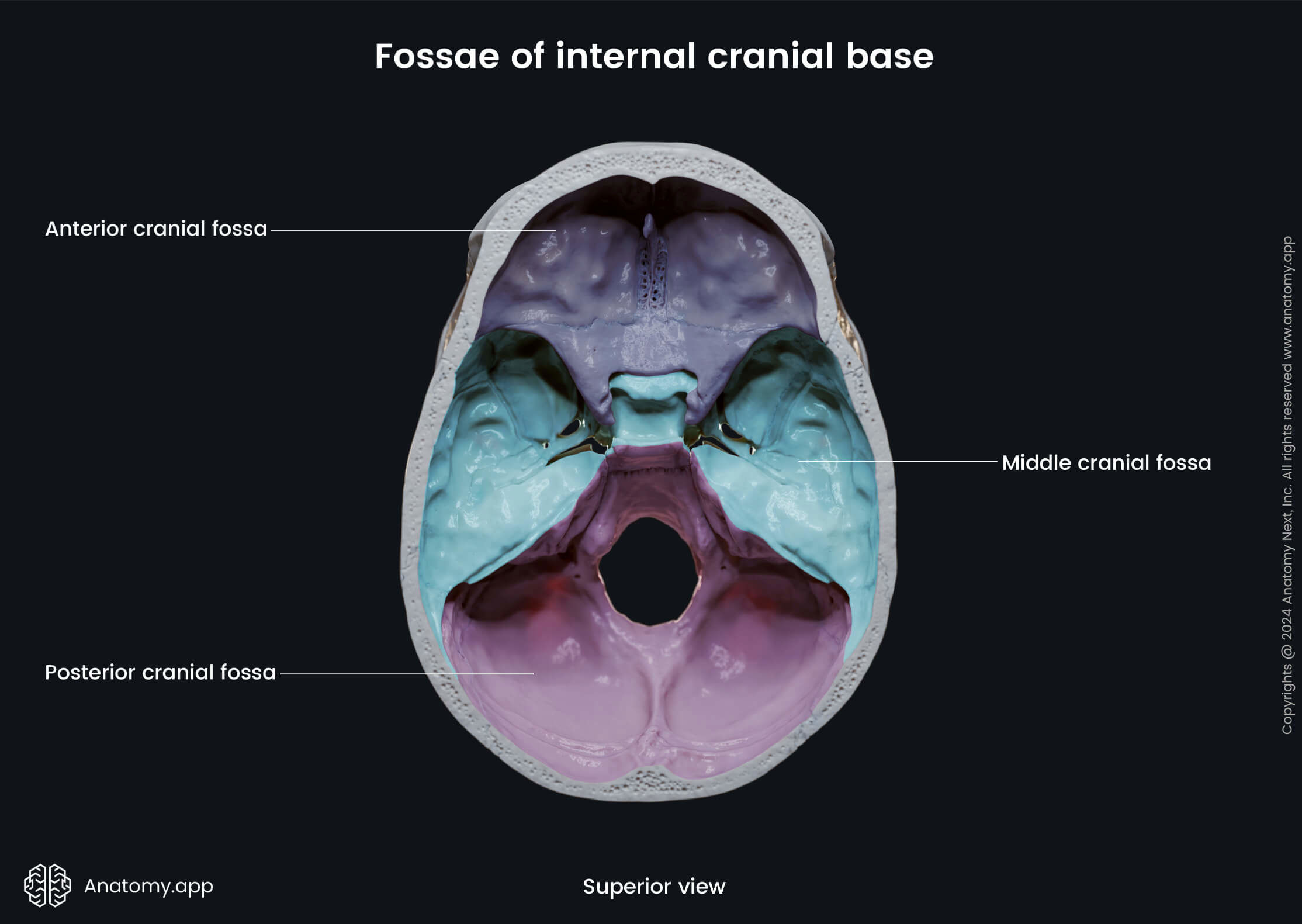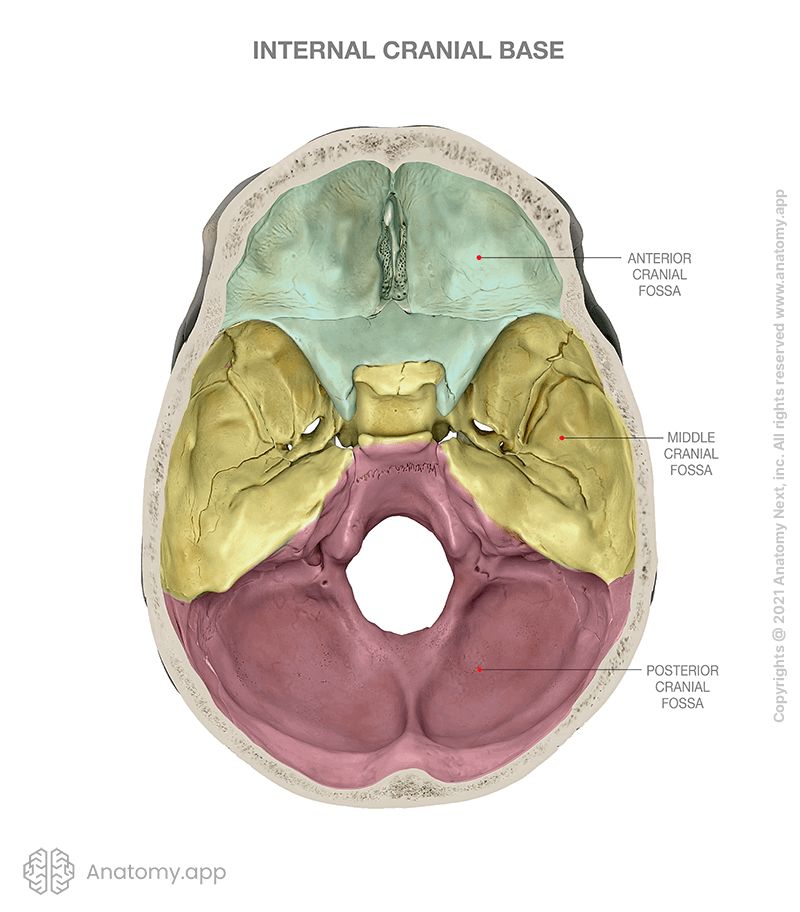- Anatomical terminology
- Skeletal system
- Skeleton of trunk
-
Skull
- Neurocranium
- Viscerocranium
- Auditory ossicles
- Sutures of skull
- Topography of skull
- Skeleton of upper limb
- Skeleton of lower limb
- Joints
- Muscles
- Heart
- Blood vessels
- Lymphatic system
- Nervous system
- Respiratory system
- Digestive system
- Urinary system
- Female reproductive system
- Male reproductive system
- Endocrine glands
- Eye
- Ear
Internal cranial base
The internal cranial base (Latin: basis cranii interna), also known as the internal surface of the cranial base, refers to the inside aspect of the base of the skull. The internal cranial base accommodates the brain, intracranial parts of the cranial nerves and spinal nerves, meninges, intracranial blood vessels, and the cerebrospinal fluid.

Anteriorly, the space of the internal cranial base is bounded by parts of the frontal, sphenoid, ethmoid bones. Laterally, it is bounded by the parietal and temporal bones. Posteriorly, the boundary is formed by the squamous part of the occipital bone.
The internal cranial base has many openings which connect the cranial cavity with other cavities and the outer side of the skull. These openings mostly serve as passageways for blood vessels and nerves.
Three regions known as the cranial fossae can be distinguished in the internal cranial base: anterior cranial fossa, middle cranial fossa and posterior cranial fossa. Each of these fossae houses a different part of the brain.

